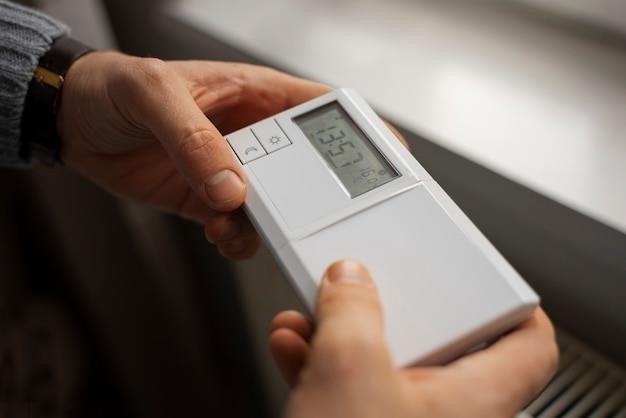canon eos350d manual

Canon EOS 350D Manual⁚ A Comprehensive Guide
This comprehensive guide provides an in-depth exploration of the Canon EOS 350D, a popular digital SLR camera known for its user-friendliness and image quality. From basic operation to advanced settings, this manual covers everything you need to know to master your EOS 350D.
Introduction
The Canon EOS 350D, also known as the Rebel XT, was a groundbreaking digital SLR camera released in 2005. This entry-level DSLR quickly gained popularity among both amateur and professional photographers due to its impressive features and affordability. It offered a significant leap forward in digital photography, making high-quality images accessible to a wider audience.
The EOS 350D was lauded for its combination of performance and ease of use. It featured an 8-megapixel CMOS sensor, a powerful DIGIC II image processor, and a comprehensive suite of shooting modes, catering to a range of photographic styles and skill levels. Its compact design and lightweight construction made it a highly portable camera, perfect for capturing everyday moments and exploring the world of photography.
This manual serves as a comprehensive guide to the Canon EOS 350D, providing detailed information on its features, operation, and maintenance. Whether you are a seasoned photographer looking to enhance your skills or a newcomer to the world of DSLRs, this guide will equip you with the knowledge to make the most of your EOS 350D.
Key Features and Specifications
The Canon EOS 350D boasted an array of features that made it a compelling choice for photographers of all levels. At its core was an 8-megapixel CMOS sensor, capable of capturing detailed images with excellent color reproduction. The DIGIC II image processor ensured fast processing speeds, enabling rapid shooting and efficient image handling. The camera’s autofocus system, with nine cross-type sensors, provided accurate and reliable focusing, even in challenging lighting conditions.
The EOS 350D featured a 2.5-inch LCD screen, offering clear image review and menu navigation. Its built-in flash provided ample illumination for close-up shots and low-light situations. Notably, the camera was compatible with Canon’s extensive range of EF lenses, offering photographers a vast selection of options to suit their creative needs. This versatility, combined with its compact size and lightweight design, made the EOS 350D a highly adaptable and versatile camera.
Beyond its core features, the EOS 350D offered a range of additional capabilities, including a variety of shooting modes, a built-in self-timer, and support for RAW image capture. Its specifications included a 3 frames per second continuous shooting rate, a sensitivity range of ISO 100-1600, and a maximum shutter speed of 1/4000 seconds.
Camera Setup and Basic Operation
Setting up the Canon EOS 350D is a straightforward process, thanks to its user-friendly interface. Begin by attaching the lens, ensuring it’s securely fastened. Next, insert a compatible SD memory card, ensuring it’s properly seated. Power on the camera using the on/off switch located on the top panel. Familiarize yourself with the camera’s basic controls, including the shutter button, zoom ring, and mode dial. The mode dial allows you to select from a variety of shooting options, such as automatic, manual, and creative modes.
Navigate through the camera’s menus to adjust settings such as date and time, image size, and quality. The EOS 350D provides an intuitive menu system, making it easy to customize your shooting preferences. Practice using the viewfinder to compose your shots, ensuring the subject is in focus and well-framed. The viewfinder displays key information, such as shutter speed, aperture, and exposure settings, to help you make informed decisions.
Familiarize yourself with the camera’s LCD screen, which displays images, menus, and shooting information. Learn how to navigate through the menu system to access various settings and options. With a little practice, you’ll be able to operate the EOS 350D with ease, capturing impressive images from the start.

Shooting Modes and Settings
The Canon EOS 350D offers a range of shooting modes to cater to different photographic situations and skill levels. For beginners, the automatic modes simplify the shooting process, letting the camera handle exposure and focus settings. Manual modes provide greater control over exposure, allowing you to fine-tune settings for optimal results. Creative modes, such as aperture-priority and shutter-priority, offer a balance between automation and manual control.
The EOS 350D also includes a variety of shooting settings that can be adjusted to enhance your images. These settings include ISO sensitivity, which determines the camera’s sensitivity to light, white balance, which adjusts for different lighting conditions, and picture style, which alters the image’s color and contrast. Experiment with these settings to discover how they affect your images and find the combination that suits your style.
Understanding the various shooting modes and settings available on the EOS 350D is essential for achieving your desired results. Whether you prefer the convenience of automatic modes or the creative freedom of manual control, the camera provides the flexibility to capture stunning photographs.
Automatic Modes
The Canon EOS 350D features a variety of automatic modes designed to simplify the shooting process for beginners and those seeking a hassle-free experience. The “Auto” mode sets all camera settings automatically, making it ideal for casual photography. The “Program” mode allows the camera to choose the best aperture and shutter speed combination for the scene, while giving you the option to adjust other settings like ISO and white balance.
The EOS 350D also offers “Scene” modes, which are optimized for specific subjects or situations. These modes include “Portrait,” “Landscape,” “Sports,” and “Night” modes, among others. Each scene mode automatically adjusts the camera settings to produce optimal results for the chosen scene, ensuring sharp, well-exposed images.
Automatic modes are a valuable tool for beginners and those who want to concentrate on framing and capturing the moment without worrying about complex settings. They provide a convenient and reliable way to produce impressive photographs in a variety of situations.
Manual Modes
For those who wish to take control of their photography and explore the full creative potential of the EOS 350D, manual modes offer a wealth of possibilities. The “Shutter-Priority” (Tv) mode allows you to set the shutter speed, while the camera automatically selects the appropriate aperture for proper exposure. This is ideal for capturing fast-moving subjects or creating motion blur effects.
The “Aperture-Priority” (Av) mode lets you choose the aperture, which controls the depth of field, while the camera sets the shutter speed. This mode is perfect for controlling the amount of background blur in portraits or for achieving a specific depth of field in landscapes. The “Manual” (M) mode gives you complete control over both shutter speed and aperture, allowing you to fine-tune exposure and creative effects. This mode requires a deeper understanding of photography concepts but offers the highest level of creative freedom.
Manual modes provide an opportunity to learn about the fundamental principles of photography and create images that reflect your unique vision. They empower you to experiment with different settings and explore the nuances of light and composition, unlocking a new level of photographic expression.
Creative Modes
The EOS 350D offers several creative modes designed to enhance your photographic style and simplify the process of capturing unique images. “Portrait” mode optimizes settings for capturing sharp subjects with a soft background blur, ideal for flattering portraits. “Landscape” mode prioritizes sharpness and detail throughout the entire image, perfect for capturing breathtaking vistas. “Sports” mode utilizes fast shutter speeds to freeze action, ideal for capturing dynamic sports events.
“Night” mode employs a longer exposure time and higher sensitivity to capture detailed images in low-light conditions. “Macro” mode allows for close-up photography, revealing intricate details of small subjects like insects or flowers. “Fireworks” mode utilizes a long exposure to capture the trails of fireworks, creating stunning visual effects. “Neutral” mode provides a balanced color rendition for accurate representation of scenes.
These creative modes provide a starting point for exploring different photographic styles, allowing you to experiment with various settings and achieve unique results without the need for manual adjustments. They serve as a gateway to expanding your creative horizons and capturing images that reflect your personal vision.
Image Quality and File Formats
The Canon EOS 350D boasts an 8-megapixel CMOS sensor capable of capturing high-resolution images with impressive detail and clarity. This sensor, coupled with Canon’s DIGIC II image processor, delivers vibrant colors, excellent dynamic range, and low noise levels, even in challenging lighting conditions. The camera offers a choice of JPEG and RAW file formats, allowing for flexibility in post-processing and image manipulation.
JPEG files are compressed for efficient storage and sharing, while RAW files capture the full data from the sensor, offering greater flexibility for editing and adjustments. The EOS 350D also supports various image sizes and compression ratios, enabling you to tailor your image files to specific needs, whether for printing, online sharing, or archival purposes; The camera’s image quality, combined with its versatile file format options, empowers you to capture stunning photographs that meet your creative and technical requirements.
Lens Compatibility and Selection
The Canon EOS 350D enjoys compatibility with a wide range of Canon EF and EF-S lenses, offering incredible versatility for capturing various subjects and perspectives. EF lenses are designed for full-frame cameras, while EF-S lenses are specifically designed for APS-C sensors like the one found in the EOS 350D. This compatibility allows you to explore different focal lengths, from wide-angle to telephoto, expanding your photographic possibilities.
When choosing lenses for your EOS 350D, consider your shooting interests and budget. For everyday photography, a versatile kit lens like the Canon EF-S 18-55mm f/3.5-5.6 IS is an excellent starting point. If you’re interested in macro photography, a dedicated macro lens like the Canon EF 100mm f/2.8 Macro USM will allow you to capture stunning close-ups. For wildlife or sports photography, a telephoto lens like the Canon EF 70-200mm f/2.8L IS II USM will provide the reach you need.
Exposure Control and Metering
The Canon EOS 350D offers a range of exposure control options, allowing you to fine-tune the brightness of your images. The camera features a sophisticated metering system that evaluates the scene’s brightness and recommends appropriate exposure settings. You can choose from different metering modes, such as Evaluative metering, which analyzes the entire scene, and Spot metering, which focuses on a small area in the center of the frame.
Manual exposure control grants you complete creative freedom to set the aperture and shutter speed according to your vision. Aperture priority mode allows you to control the depth of field, while shutter priority mode lets you determine the motion blur. The EOS 350D also incorporates automatic exposure modes, such as Program mode, which automatically selects aperture and shutter speed for optimal results. These modes are ideal for beginners or for capturing quick shots in various lighting conditions.
Focusing and Autofocus
The Canon EOS 350D boasts a reliable autofocus system that ensures sharp images, even in challenging lighting conditions. The camera utilizes a nine-point autofocus system, with a cross-type sensor in the center, providing accurate focus across a wider range of subjects. The autofocus modes include One-Shot AF, which locks focus at a single point, and AI Servo AF, which continuously tracks moving subjects.
You can select the autofocus point manually or allow the camera to choose the optimal point based on the scene. The EOS 350D also offers a manual focus option, allowing you to fine-tune focus manually for greater control, especially in situations where autofocus may struggle, such as macro photography or low-light conditions. The camera’s focus confirmation system provides visual feedback to indicate when the subject is in focus, ensuring you capture sharp and detailed images.
Flash Modes and Settings
The Canon EOS 350D is equipped with a built-in flash, providing an extra boost of light when shooting in low-light conditions or when you need to fill in shadows. The flash offers various modes to suit different shooting situations. Auto Mode automatically adjusts the flash output based on the scene, while Fill-In Mode provides subtle illumination to soften shadows. Red-Eye Reduction Mode helps minimize the red-eye effect often encountered in flash photography.
The EOS 350D also supports external flash units, offering greater control over lighting and creative possibilities. You can adjust the flash intensity, sync speed, and other settings to achieve your desired lighting effects. Additionally, the camera offers flash compensation options to fine-tune the flash output and balance the light in your images. This allows you to create balanced and well-lit images, even when shooting in challenging lighting conditions.
Connecting to a Computer and Software
The Canon EOS 350D can be connected to a computer using a USB cable, enabling you to transfer images, download firmware updates, and manage your photos. The camera is compatible with Canon’s EOS Utility software, which provides a user-friendly interface for transferring, viewing, and organizing images. You can also use EOS Utility to remotely control the camera, adjust settings, and capture images from your computer.
Additionally, the EOS 350D supports PictBridge technology, allowing you to print images directly to compatible printers without the need for a computer. The camera also supports various other software applications, including Canon’s Digital Photo Professional (DPP) for RAW image processing and editing. DPP provides comprehensive tools for adjusting exposure, white balance, color, and sharpness, allowing you to enhance your images and unlock their full potential.




